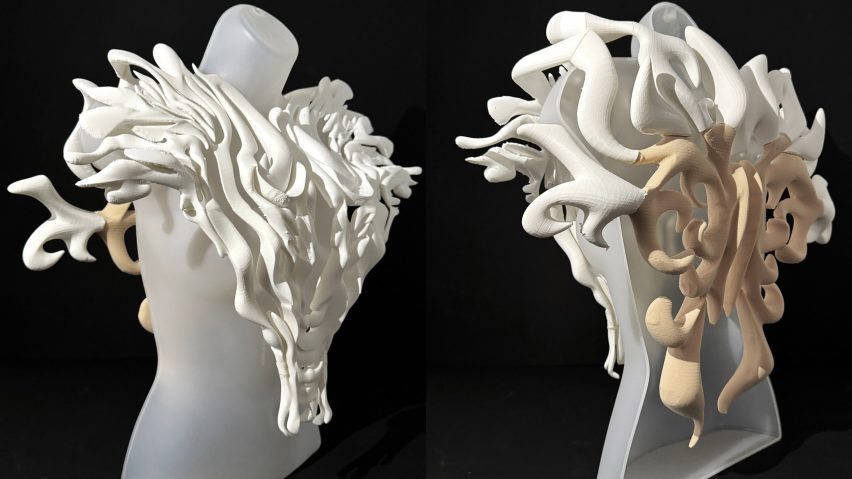
New York Institute of Technology spotlights seven fabrication and robotics projects
Dezeen School Shows: a 3D printed panel made from wood and clay that is filled in with hempcrete is included in this school show by the New York Institute of Technology.
Also included is a project that creates 3D printed materials based on the structure of chainmail and an installation that uses folded aluminium sheets to create dramatic lighting effects.
New York Institute of Technology
Institution: New York Institute of Technology
School: School of Architecture and Design
Course: Master of Science, Architecture, Computational Technologies
Tutor: Fadhil Fadhil
School statement:
"MS Architecture Computational Technologies program within New York Institute of technology, School of architecture and design, is exhibiting seven projects at Fuori Salone during Milan Design week from 15 to 21 April in collaboration with HoperAperta.
"The projects explore a hybrid concept of resolution through robotics fabrication set forth by the fabrication and robotics research theme led by professor Fadhil Fadhil in relation to the concept of Mimesis set forth by HoperAperta curated by Patrizia Catalano and Maurizio Barberis.
"Projects explore multiple domains within the world of design that include architecture, product design, fashion and urban design.
"Each project's research explores three stages of design that encapsulate material research, computation design and robotics fabrication.
"All projects explore materiality in relation to computational design and robotics fabrication.
"They examine the development of numerous scripts that explore digital fabrication and algorithmic modelling.
"Students experiment with various computational techniques that focus on studying form, patterns, structures, façade panels or interior components.
"Students learn how to conduct proper and rigorous material research through digital simulations and physical prototyping in preparation for the final design product.
"Projects are concentrated on researching sustainable materials that can be fabricated through advanced robotic fabrication tools.
"In parallel to the material research, projects undergo rigorous physical exploration conducted at NYIT, School of Architecture and Design Fabrication and robotics labs to continue to push the fabrication process of the final design.
"The final product is an adaptable component which is an architectural object or a system that combines the complexity of computational design as well as digital design and fabrication.
"Students are also asked to address the fabrication method of this component digitally by designing an end effector or a mechanism that can be used as an attachment to the robotic arm to conduct the proper fabrication method.
"The course generally examines a methodology that heavily focuses on the concept of three-dimensional resolution through robotics fabrication to generate a platform through which a wide range of projects is developed."
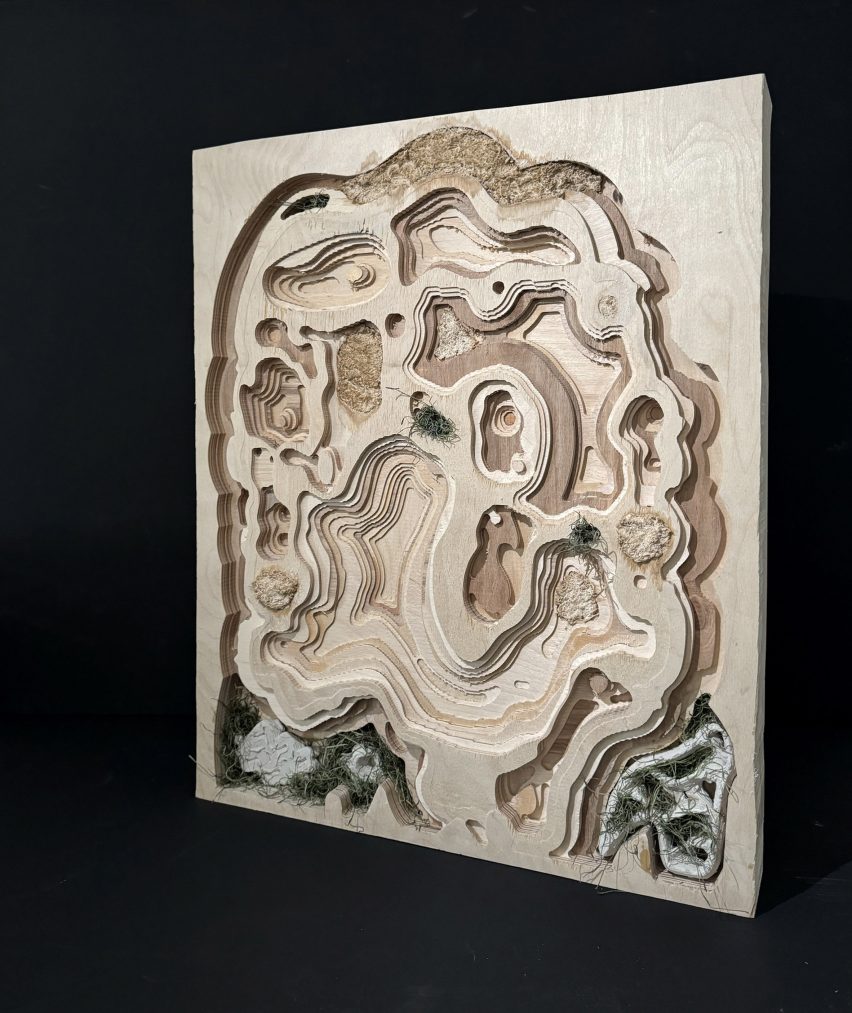
Bio Receptive Panel by Meraj Nasir and Jacob Sam
"This project explores the concept of bioreceptivity, an ecological term that describes the ability of living organisms to colonise and occupy a man-made building material.
"Clay is the primary material explored through this project, not only for its ability to host living organisms but also its durability and adaptability when it comes to ever-changing environmental circumstances.
"Clay 3D printing is the primary technology explored in addition to wood as a structural component and hempcrete as a finish texture.
"The final product is a hybrid of a wood component used as a structural panel that holds clay 3D printed segments and hempcrete infill."
Students: Meraj Nasir and Jacob Sam
Course: Fabrication and Robotics
Tutor: Fadhil Fadhil
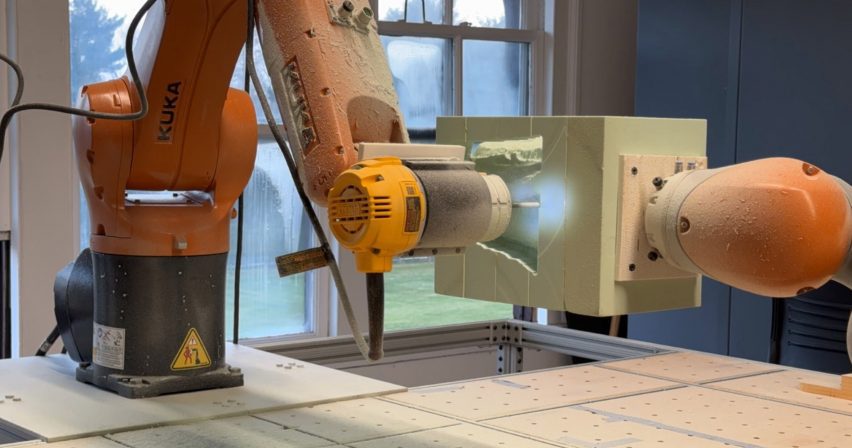
3D Scanning to Robotics Milling by Mike Saad
"In this project, high-density foam objects serve as a platform for delving into the concept of 'resolution through fabrication,' a focal point within the realm of robotics and fabrication.
"This process involves the transformation of random 3D scanned objects into fully realised components that manifest diverse texture resolutions.
"Such resolutions are dictated by several fabrication variables, including toolpath densities, mill bit types and tool sizes.
"Through this project, the exploration of 3D resolution via robotics six axes milling accentuates the significance of these fabrication variables, which are manifested through geometry, tool paths and tool bits."
Students: Mike Saad
Course: Fabrication and Robotics
Tutor: Fadhil Fadhil
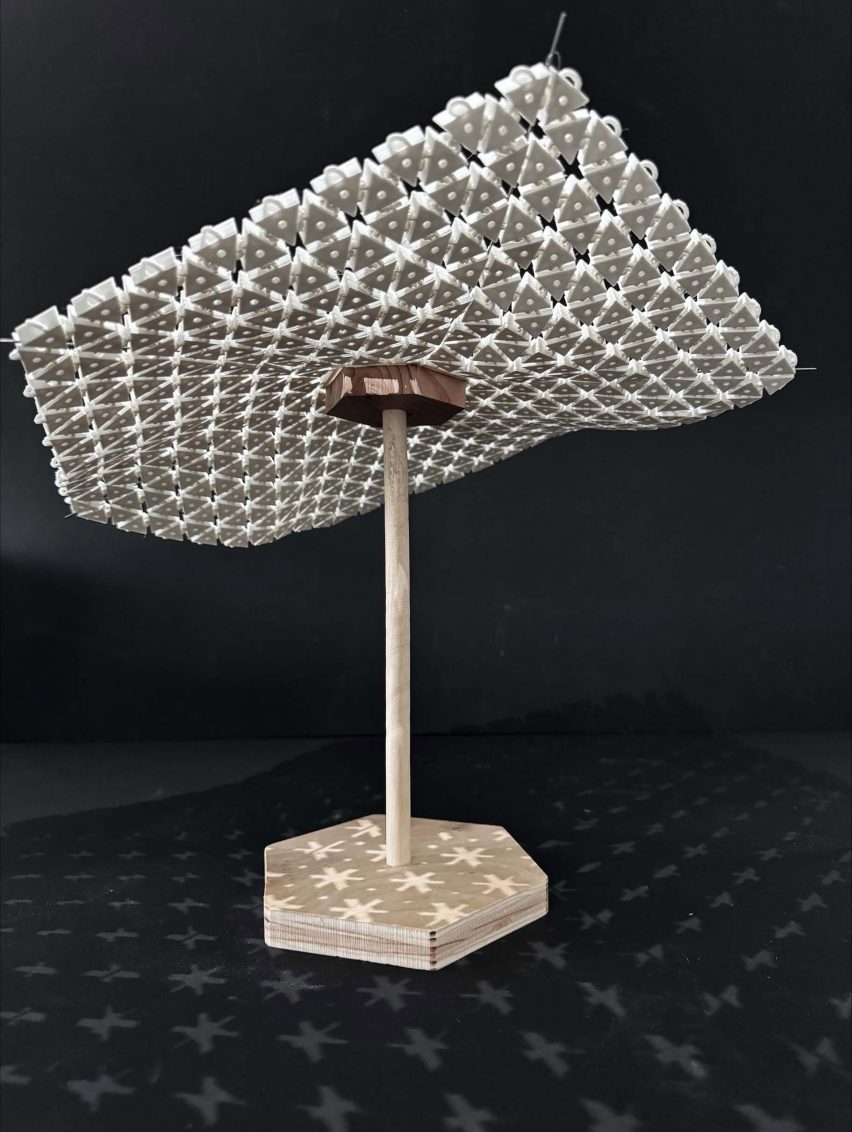
Chainmail Geodesic Dome by Karan Patel and Jahan Selim
"The project delves into the concept of chainmail, leveraging the assembly of small objects interconnected through flexible links to create dynamic fabric effects.
"This innovative approach harnesses the power of 3D printing to generate solid objects that, when aggregated, form flexible and adaptable structures.
"The flexible facade is merged with a reimagined geodesic dome structure that lies at the heart of the project, featuring central hinge connections that facilitate rotational flexibility.
"The envisioned final product holds the potential to serve as a flexible facade or a resilient structural system, capable of accommodating various environmental conditions."
Students: Karan Patel and Jahan Selim
Course: Fabrication and Robotics
Tutor: Fadhil Fadhil
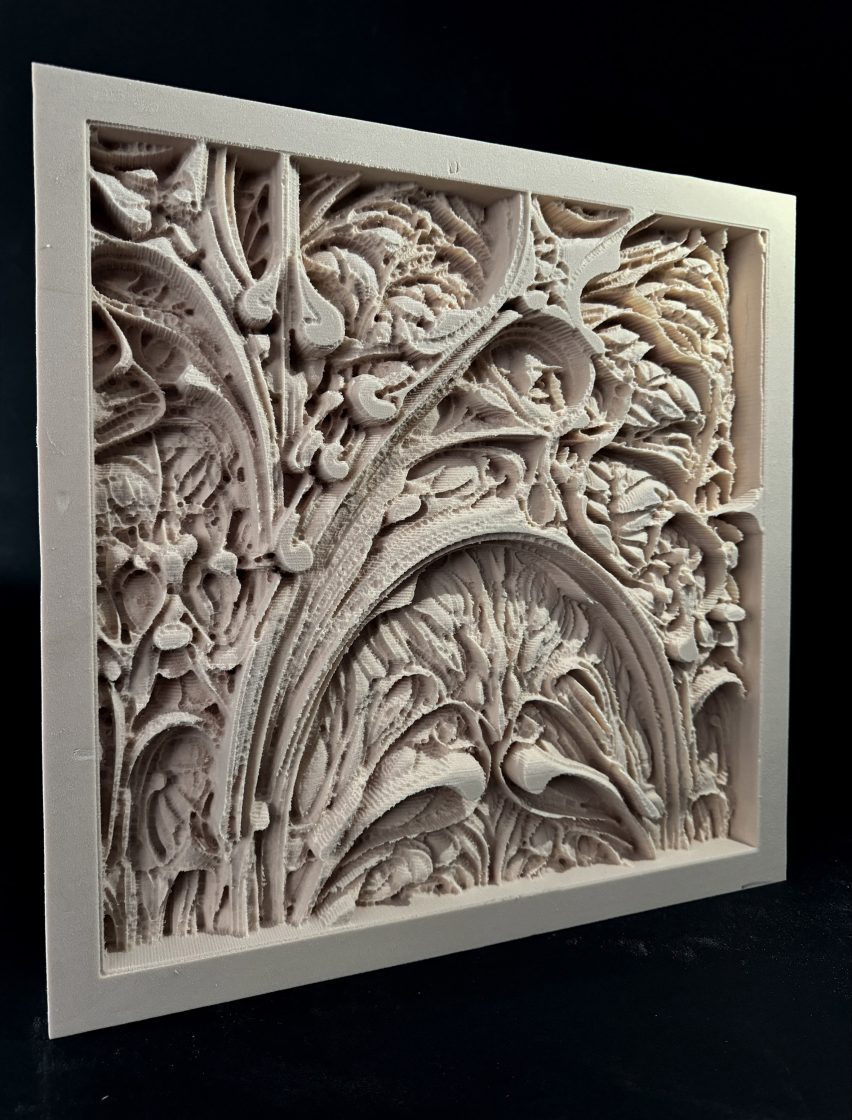
High Three-Dimensional Resolution by Amisha Bavadiya
"The project explores AI image mapping and the transformation of 2D images into three-dimensional panels utilising CNC milling while controlling the outcome through toolpath densities and tool bit variations.
"The process starts with a 2D AI-generated image that is then projected into a three-dimensional mesh that is additionally translated into a CNC mill tool path.
"The increase in three-dimensional resolution in this case depends heavily on the grayscale image map and the density of the tool path in relation to the CNC tool size.
"The three-dimensional panel depicts a very high accuracy result to the original AI-generated image."
Students: Amisha Bavadiya
Course: Fabrication and Robotics
Tutor: Fadhil Fadhil
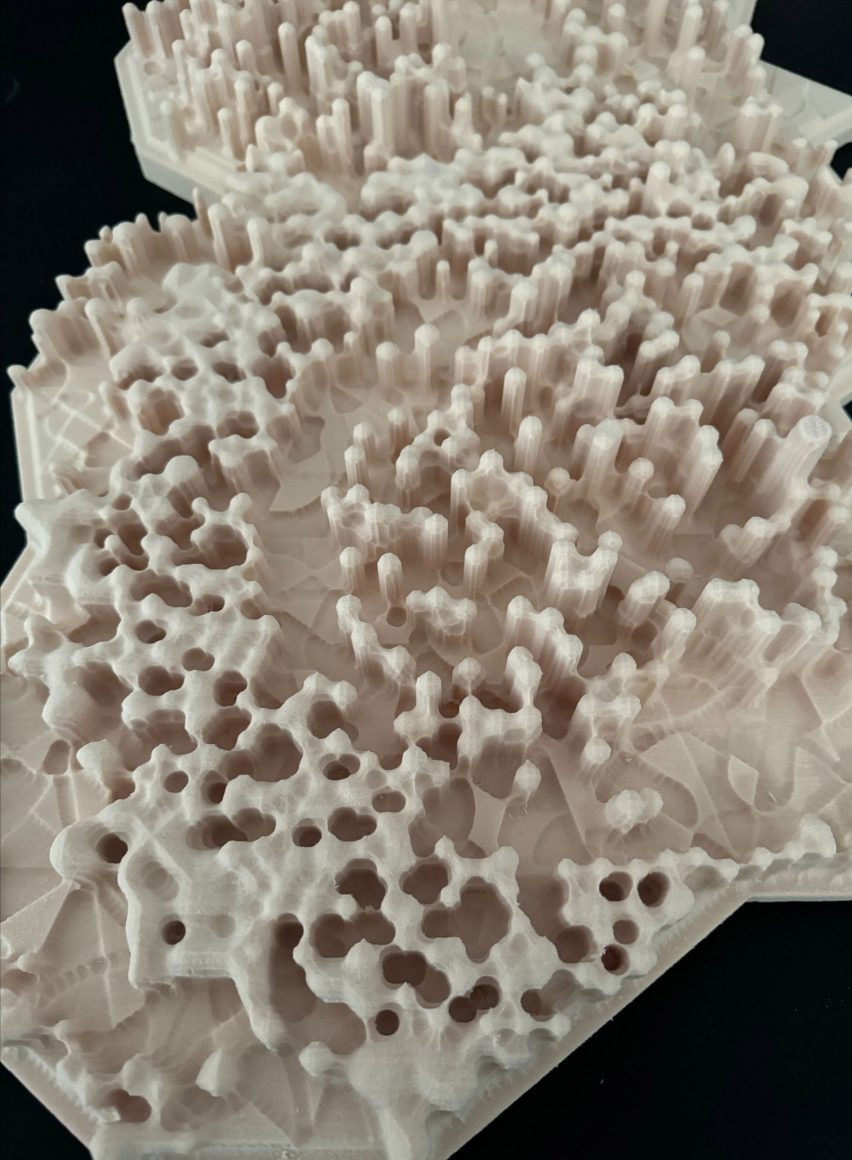
Reimagining Urban Design through Fabrication by Alejandro Romero
"The project features a high-density foam model that illustrates various urban densities within a hypothetical city project.
"Through an innovative design process, fabrication methods like CNC milling are employed to reimagine the urban digital model using different CNC tools and tool path densities.
"This endeavour represents an ambitious attempt to merge urban design principles with digital design and robotics fabrication techniques.
"By closely examining urban variables such as densities, circulation paths and volumes, the project seeks to redefine them as fabrication variables capable of shaping the evolution of urban scenarios."
Students: Alejandro Romero
Course: Fabrication and Robotics
Tutor: Fadhil Fadhil
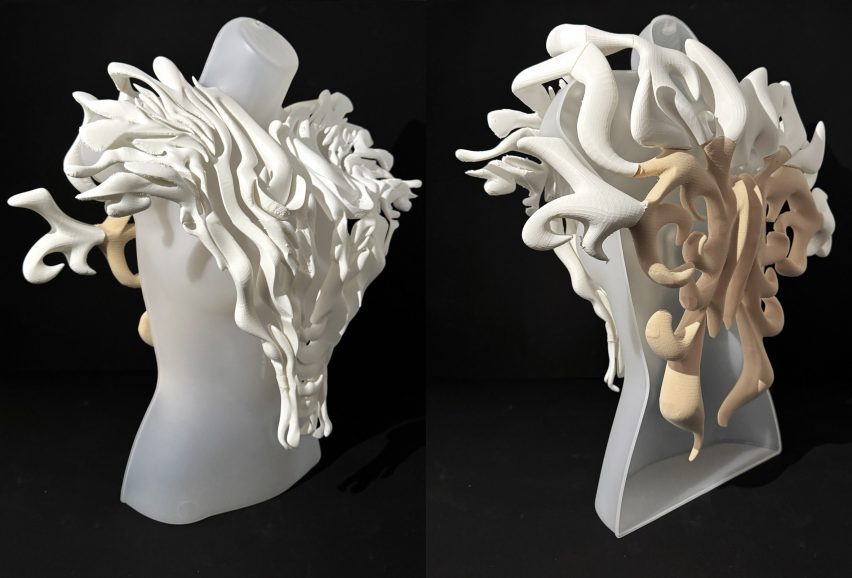
Adaptable wearable Device by Selin Dastan
"This project explores the idea of digital aesthetics through fashion.
"The exercise embarks upon a journey of discovery through AI-generated images, computational design and surface modelling to examine a trend of digitally fabricated design strategies.
"The project is constantly trying to reinvent form and materiality through particular sets of design techniques and fabrication methods that include PLA 3D printing and CNC flip milling.
"The interlocking connecting seams between the parts allow for the detachment of the different parts of the piece to provide flexibility and adaptability while fitting on the human body."
Students: Selin Dastan
Course: Fabrication and Robotics
Tutor: Fadhil Fadhil
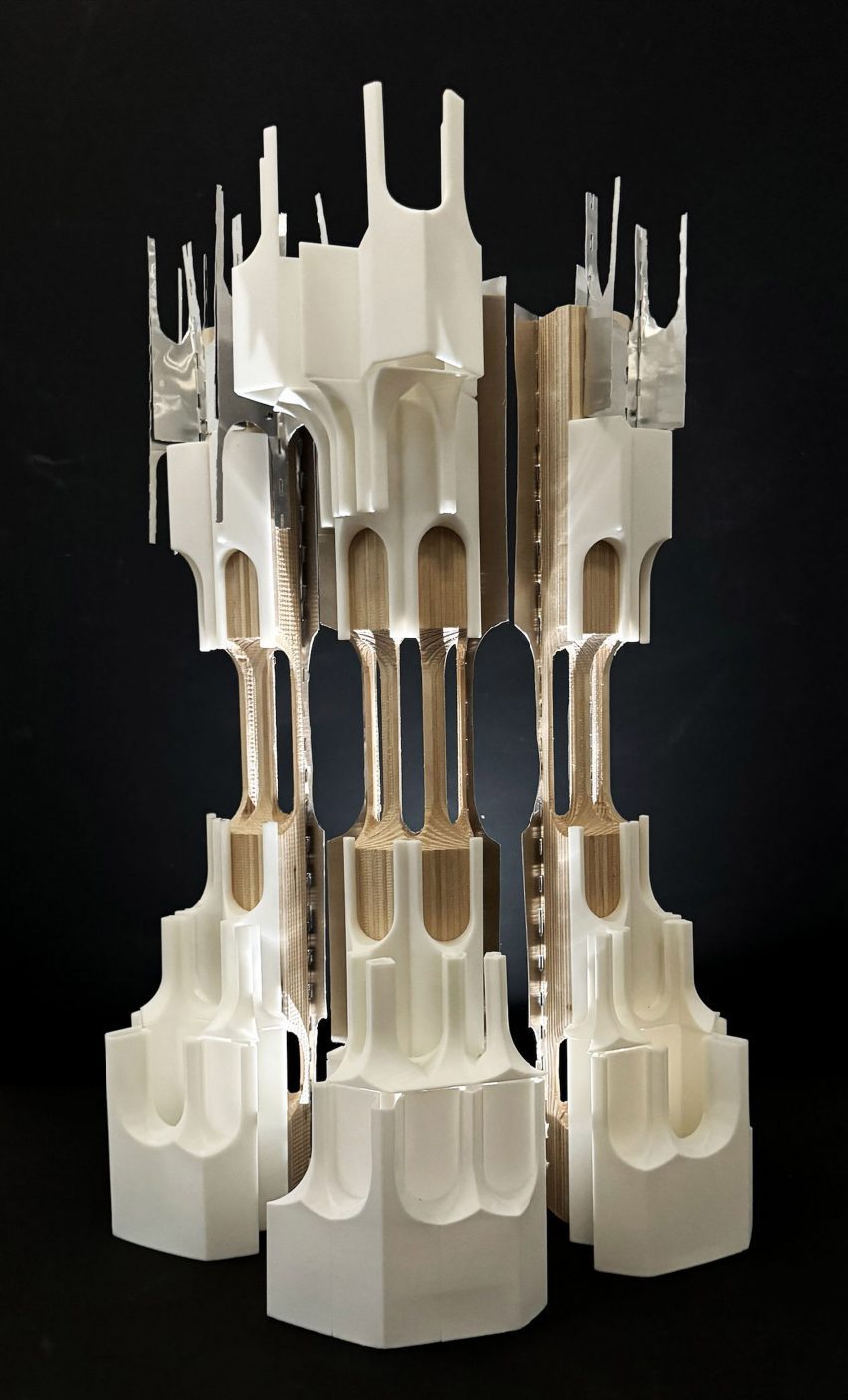
Deconstructing Muqarnas by Yashraj Chauhan and Arefin Chisty
"This prototype proposes a lighting installation that combines both light and shadow interactions with folded aluminium sheets.
"It is an attempt to revive lost historical craftsmanship techniques by utilising highly advanced computational design and robotics fabrication tools.
"The Muqarnas in this case is treated as a deconstructed component that manifests in three different forms.
"The first form is the wooden component that acts as a structural column, the second form are translucent resin 3D pieces and the third form is the deconstructed unfolded metal components."
Students: Yashraj Chauhan and Arefin Chisty
Course: Fabrication and Robotics
Tutor: Fadhil Fadhil
Partnership content
This school show is a partnership between Dezeen and New York Institute of Technology. Find out more about Dezeen partnership content here.